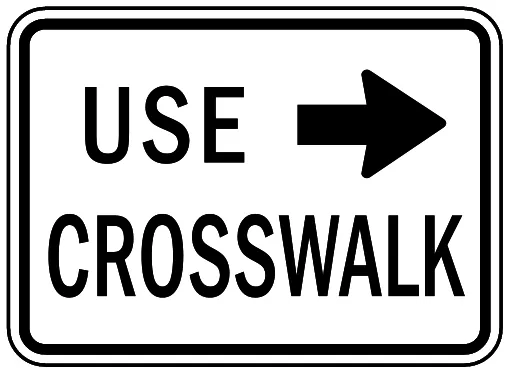Growing Pedestrian Traffic Fatalities by State

By Zane T. Cagle | March 21, 2019 | Pedestrian Accidents, Personal Injury, Wrongful Death
Governors Highway Safety Association (GHSA) Release Report of Pedestrian Highest Proportion in past 33 Years
The number of pedestrian fatalities have increased by 27 percent from 2007 to 2016 which is a startling number. According to a recent study, pedestrians now make up a larger proportion of traffic fatalities than they have in the past 33 years. The number of states that have doubled the ratio of pedestrian deaths has doubled. It has been more than 25 years since the U.S. experienced pedestrian fatalities at this level.
The Idea that a Pedestrian Always Has the Right-of Way is a Myth
Several Factors that Contribute to the increase in pedestrian fatalities:
- Some increases in some states may be linked to population growth in specific cities and states.
- Increases in pedestrian fatalities are occurring largely at night- light level contributes to about 75% of fatalities of pedestrians
- Increasing use of smartphone use over the past decade, which can be a significant source of distraction for drivers and pedestrians.
The Right to Walk
Walking is the most basic, inexpensive, and environmentally friendly form of human transportation. Plus, it is healthy. One cannot say that riding in a passenger car or truck promotes good health. Walkers are not traveling the length of the city on foot, but people walking is critical for shopping, short commutes to school, traveling to work, to public transit or simply exercise. During the 10-year period from 2008-2017, the number of pedestrian fatalities in the U.S. increased by 35 percent. In 2008, there were 4,414 deaths and in 2018, there were 5,977 deaths. At the same time other traffic deaths have declined.
When walking in a metropolitan area, you have a responsibility to keep a look out for all vehicles and follow crosswalk lights. You cannot “dart out” in front of vehicles and expect them to see you. ‘Darting out” tends to refer to those pedestrians that fail to cross in crosswalks and weave in and out of traffic. Those walking on more remote roads or highways, should walk “against” traffic on the shoulder of the road so that you can see cars approaching you. Walking on the shoulder with traffic on rural roads is hazardous. Many drivers are not looking for pedestrians on highways and interstates, so you have to use a lot of caution. You should not walk along interstates.
States with Highest Percentages of Pedestrian Deaths
California, Arizona, Texas, Georgia and Florida make up 46% of all pedestrian fatalities. The light level was examined and it was discovered that about 75% of pedestrian fatalities occurred in evening and low light times. Roadway type was also examined. The highest numbers of pedestrian fatalities occurred on local streets (35%): state highways (25%): U.S. highways (16%); interstates (10%); and county roads (8%). This seems logical since there is naturally more pedestrian traffic on local streets and sidewalks to the extreme of the interstate where no pedestrian markers are available. In fact, most would strongly advocate that one never walk on an interstate by design. One would imagine that most of these interstate pedestrian fatalities occur due a stranded vehicle-related experience.
Greatest Number of Pedestrian Fatalities DO NOT Occur at intersections
This makes all kinds of logical senses. When pedestrian cross roadways at an intersection, there are crosswalks and drivers are more likely to look for pedestrians. Cross walk signals greatly increase pedestrian safety. When pedestrians cross at various places in the roadways where there is no crosswalk, the likelihood of getting hit is 72 percent, opposed to intersections at (19%). Some major metropolitan areas have ordinances that forever bar a pedestrian from making an injury claim against a driver of a passenger vehicle or commercial vehicle if the pedestrian was NOT crossing in a crosswalk. It is far safer to take the extra steps and cross a street at a crosswalk where drivers are more likely to see you.
Blood Alcohol for Drivers and Pedestrians factors into Fatalities
Alcohol impairment for the driver in the pedestrian -vehicle accident was reported in about half of traffic crashes that resulted in pedestrian fatalities. This seems like a sword that cuts both ways, right? If you are drunk, you absolutely should not drive because it is negligent and two, it’s illegal. But is it illegal to be a drunk walker? No, it is not illegal to walk while drunk, but there are natural consequences such as the possibility of delayed reaction time and diminished faculties. Even in cases where the pedestrian’s or driver’s alcohol consumption may not be identified by police as a contributing factor to the crash, a pedestrian or driver with a BAC of .08 or higher has diminished abilities that could impact judgment, decision-making and reaction time.
Age groups most likely to be killed in traffic related pedestrian fatalities incidents with a BAC greater than or equal to .08 is below:
- 16-20, 21%
- 21-24, 42%
- 25-34, 41%
- 35-44, 40%
- 45-54 35%
- 65-75, 18%
- ages over 75, 9%
When examining the data, the makes sense in regard to alcohol-related pedestrian fatalities. Many of these pedestrian fatalities occur in the evening when the likelihood of drivers and pedestrians both traveling is increased. As well, young children and the elderly are not as likely to be walking in the evening, but that is not a rule. While these statistics make sense, the number of fatalities are simply too high.
Efforts to Reduce Pedestrian Fatalities and Injuries
Progress toward reducing and eventual elimination of pedestrian fatalities seek a comprehensive approach to pedestrian safety that combines enforcement, engineering; education, and emergency medical response. By focusing on behavioral issues that lead to traffic crashes such as impaired or distracted driving, aggressive driving, seat belt use, pedestrian, motorcyclist safety; crashes and incidents can be reduced. Ultimately, greater driver and pedestrian awareness decreases the number of pedestrian-vehicle collisions.
If You Are Injured as a Pedestrian
Injuries to pedestrians hit by vehicles are usually serious if not fatal. If you are injured, you will need legal assistance. Negotiating with insurance companies can get complicated quickly in any kind of injury claim. Remember, paying out due compensation is not usually in the insurance company’s best financial interest. Yes, legally we all most buy insurance so shouldn’t you be able to get fair compensation if you are hurt? We think so and we take up the long fight to make sure that it happens for our clients.
Call us toll free 1.800.685.3302 or locally 314.276-1681 for free answers to your questions.
Contact Us Today
The Cagle Law Firm serves accident and injury clients throughout St. Louis and the greater St. Louis metro area, including St. Louis Counties of Chesterfield, Wildwood, Eureka, Ladue, Olivette, Clayton, Kirkwood, Fenton, Affton, and Jefferson Counties of Arnold, High Ridge, Antonia, House Springs, and the eastern Missouri and southern Illinois communities. If you or your family needs legal assistance with your personal injury case, call The Cagle Law Firm at (314) 276-1681 or use our online contact form to request a free case review or get more information.
Areas Served
The Cagle Law Firm – Missouri
The Cagle Law Firm – Illinois
The Cagle Law Firm – Kentucky
CONTACT THE CAGLE LAW FIRM TODAY
Request your FREE CASE REVIEW today by calling (314) 276-1681 or by sending a message through the site contact form. Your contact info stays private and is only used to reply to your inquiry.
Whether you need information about a new injury or existing injury, our lawyers answer your questions with no-risk and no followup marketing.
Free Consultations and Case Reviews
Questions? Ask An Attorney
Fields marked with an * are required
Copyright © 2025 St. Louis Personal Injury Lawyers | The Cagle Law Firm. All rights reserved.
Disclaimer | Site Map | Privacy Policy
Get a free case review with St. Louis' best personal injury lawyers to help you win top compensation





